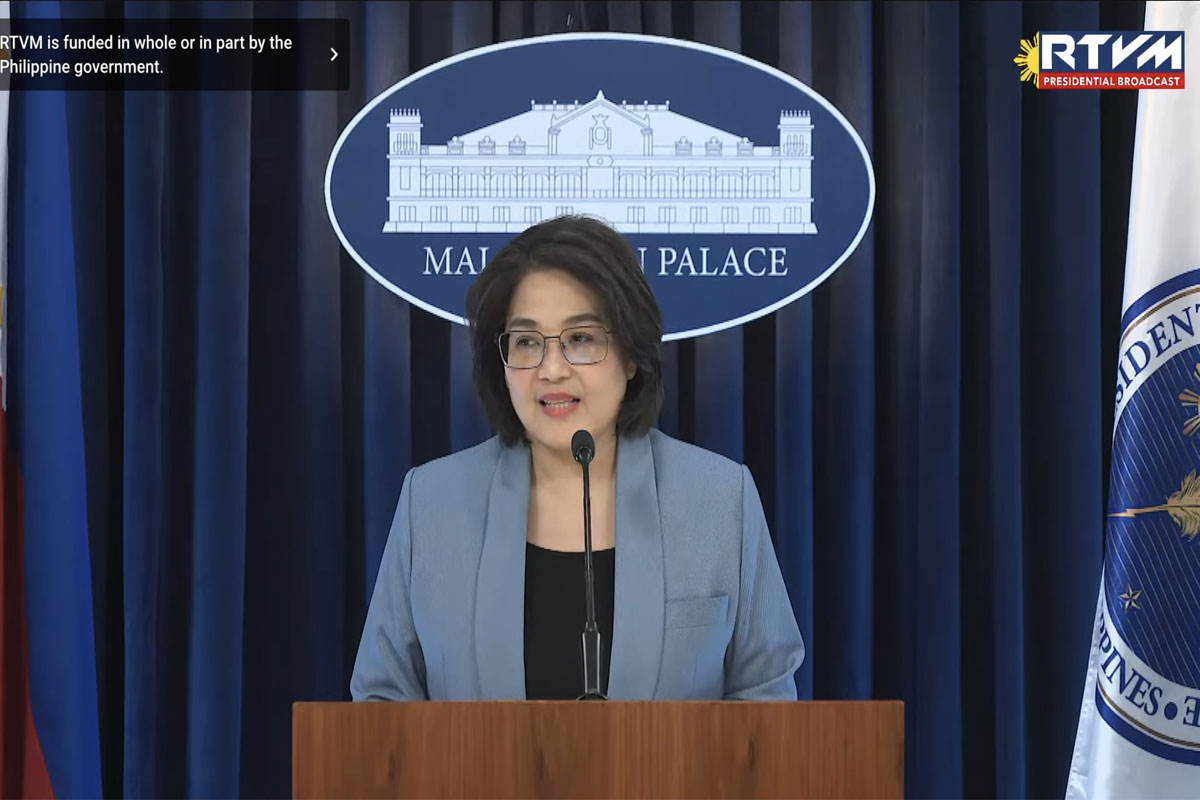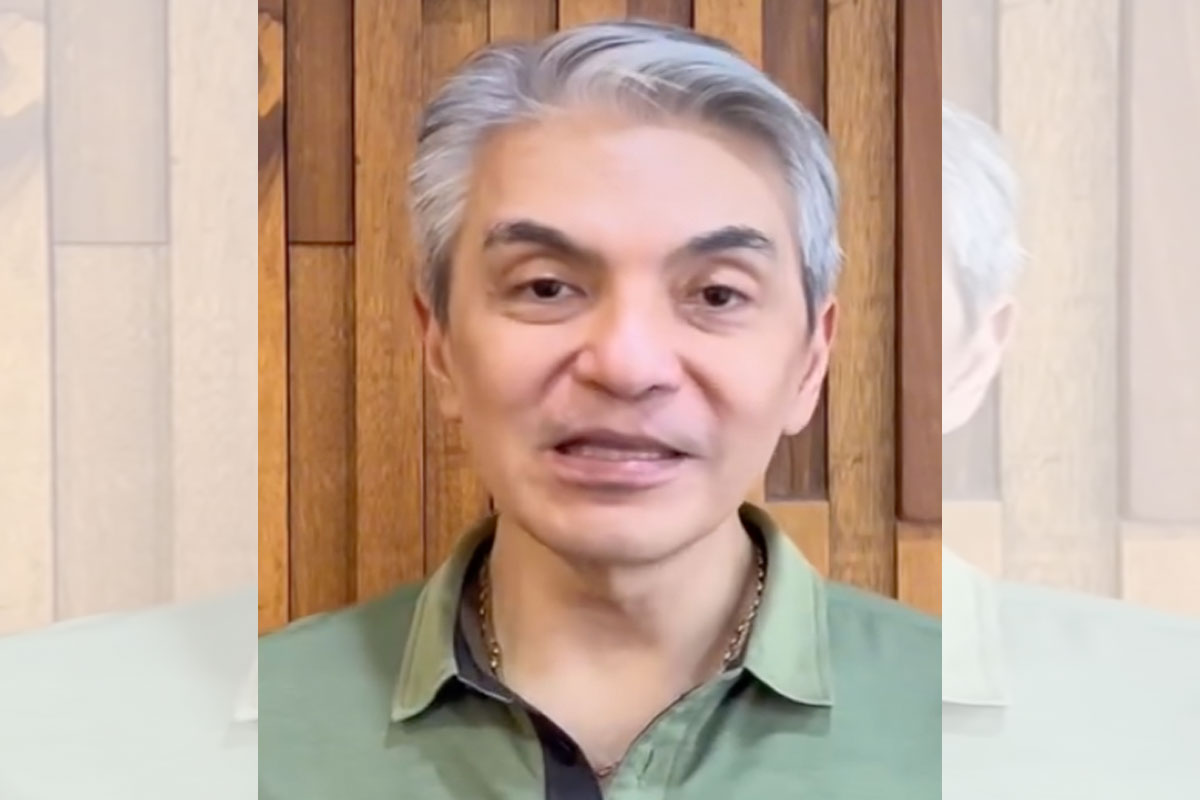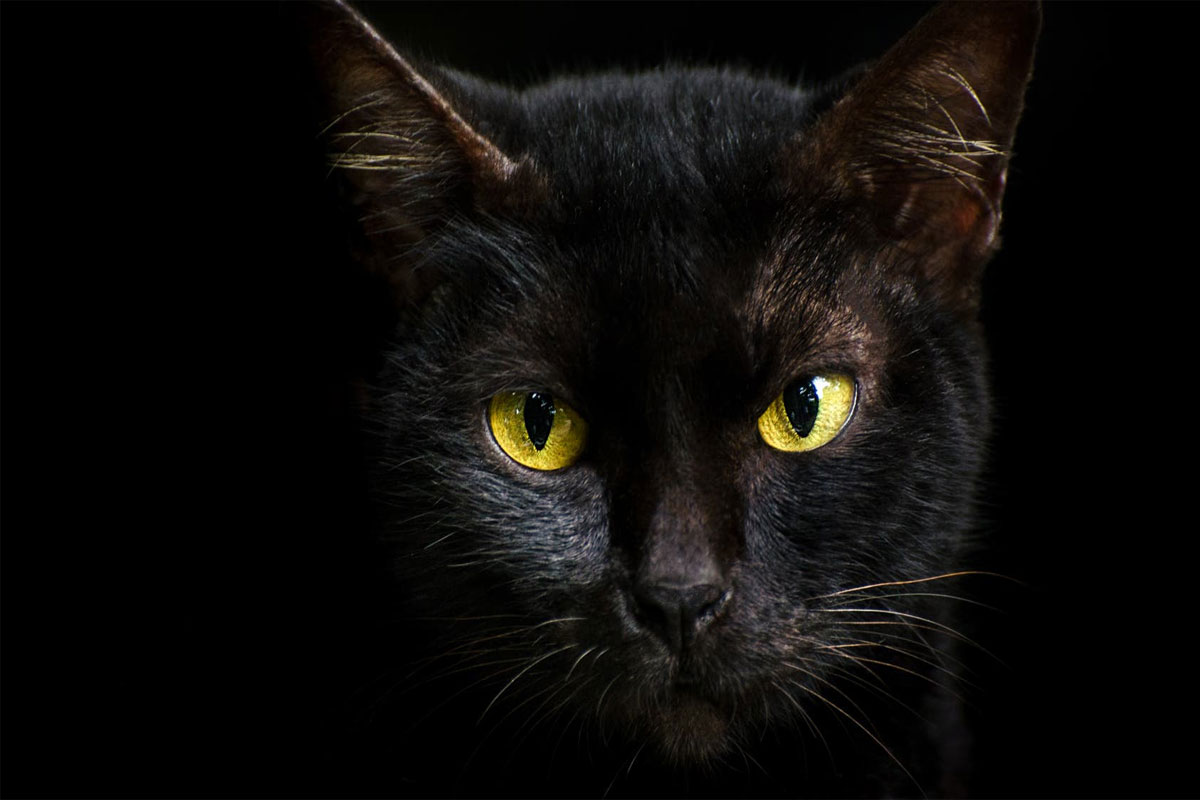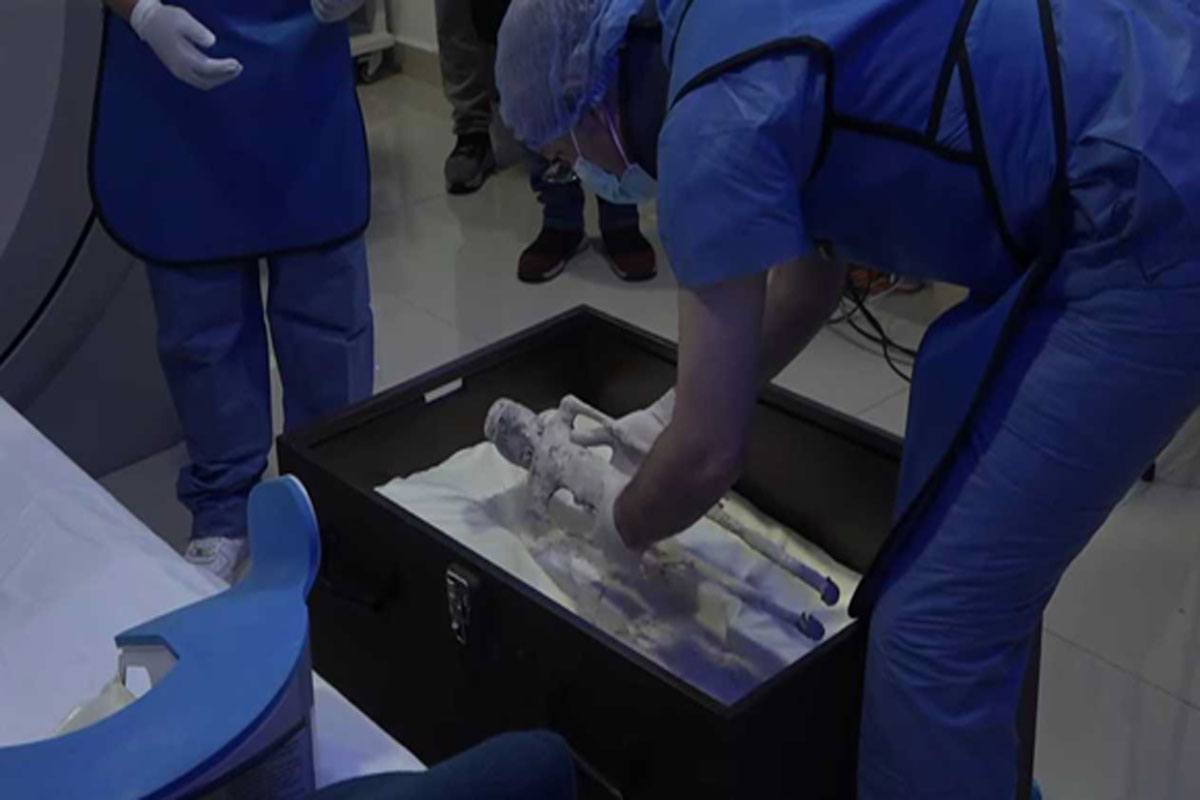
An Alien Muse and the Artist Who Channeled Her Work Through a UFO
Brent Swancer February 15, 2022
Since time unremembered, artists and creative types have often had some sort of muse, something that gives them inspiration and pushes them beyond their own creative limits to put forth works of genius. Artists over the centuries have been inspired and fueled by dreams, people, places, events, and sometimes even voices in their head or other anomalous wellsprings. Yet truly one very odd case of a bizarre muse is a woman who claimed to be channeling her artwork and writings from some other planet or dimension through an alien and UFO.
The American artist, inventor, designer, sculptor, poet, writer, and lecturer known as Pauline Peavy was born in 1901 in Old Colorado City, Colorado, and spent her childhood in Portland, Oregon. Displaying an affinity for art from an early age, in 1927 she would go on to win an advanced scholarship for 9 months paid tuition at the Chouinard Art Institute in Los Angeles, and would later study with the renowned artist Hans Hofmann. Throughout the 1920s she would play a pivotal role in the emerging West Coast art scene, and in 1929 Paulina opened the Peavy Studio of Art and Architecture and Peavy Art Gallery in San Pedro. Despite this success, these were some rather dark years for her, getting a divorce in 1932 and spending some time in a sanatorium after contracting tuberculosis in 1933, after which she fought a bitter custody battle with her ex-husband over their two sons and moved her boys to Long Beach, California, where she taught art and continued to do exhibitions. She would have many successes, such as showing with Los Angeles’s Stendahl Gallery, and exhibiting work at the opening of the San Francisco Museum of Art, and these were also the years during which her life would take a turn to the strange.
At the time, Peavy had been gaining an interest in the paranormal, and was involved to some extent with organizations dealing with such things, the art group calling itself the Group of Eight, who were into the occult, as well as another group of West Coast surrealists led by artist Lorser Feitelsoncalled and other occult groups that overlapped the art scene at the time. However, it was in 1932 when her interest in such things really took off after a séance at the Santa Ana home of a trance medium by the name of Ida L. Ewing, who was also a pastor of the National Federation of Spiritual Science. Peavy had been a member of of Ewing’s Spiritual Science church, attending weekly séances at the residence, but one of these sessions in particular would especially stand out. On this occasion, Peavy claimed to have encountered an extraterrestrial entity she called Lacamo, who appeared to her as a “wondrous ovoid-shaped UFO,” and who at first spoke solely through Ewing, but would then start contacting Peavy directly. She would say of her first encounter with the entity:
I saw a great cloud and fire unfolding itself, and a brightness was about itself, the color of amber. The spirit of the living creations was in the wheels. As for this ring, meaning sound, they were so high they were dreadful. Wherever the living creature went, the wheels went. The flying saucer’s spacecraft form is planetary, consisting of an aggregation of hierarchical egos, a vast pulsating living power unit, promulgated as seed around a central nucleus. Being seed in constant metamorphosis, they create themselves mentally by the brow in any form in any place in the universe and by feat of travel that their thought enacts upon. Their genesis is wholly mental.
 This Lacamo would gradually reveal to her various secrets of the universe, unfolding a vast cosmology apparently consisting of 12,000-year cycles with 3,000-year seasons, which were made up of the spring age, summer pyramid age, autumn age, and winter age, also referred to as “Babel.” It was revealed to her that during the summer age, reincarnated human beings could transcend their bodily and earthly constraints to become spirits, or UFOs, which she defined as “Unidentified Foreign Objects,” at the same time shucking off the idea of sexes to achieve a state of “one-gender perfection” and that of a “singular cosmic race.” According to these teachings, humans were continually reincarnated until they became what were called “pharaohs,” or “free souls,” who had achieved this “one-gender perfection” and were above all earthly biological limitations. Lacamo also told her that there would be a future in which single-sex female reproduction would render men unnecessary. In this new era, which she believed was fast approaching, sexless human beings she called “androgens” would reproduce through “self-pollination,” and there would be no more need for sperm, which she called “nature’s most lethal virus.” Lacamo also instructed her to read the Bible and the 1877 book Isis Unveiled, by the Russian philosopher, medium, and co-founder of the Theosophical Society, Helena Petrovna Blavatsky, who had many of her own paranormal adventures. This entity also made some unusual demands, such as that when writing she should make all capital letters in the Bible lower-case, and guided her in her artwork.
This Lacamo would gradually reveal to her various secrets of the universe, unfolding a vast cosmology apparently consisting of 12,000-year cycles with 3,000-year seasons, which were made up of the spring age, summer pyramid age, autumn age, and winter age, also referred to as “Babel.” It was revealed to her that during the summer age, reincarnated human beings could transcend their bodily and earthly constraints to become spirits, or UFOs, which she defined as “Unidentified Foreign Objects,” at the same time shucking off the idea of sexes to achieve a state of “one-gender perfection” and that of a “singular cosmic race.” According to these teachings, humans were continually reincarnated until they became what were called “pharaohs,” or “free souls,” who had achieved this “one-gender perfection” and were above all earthly biological limitations. Lacamo also told her that there would be a future in which single-sex female reproduction would render men unnecessary. In this new era, which she believed was fast approaching, sexless human beings she called “androgens” would reproduce through “self-pollination,” and there would be no more need for sperm, which she called “nature’s most lethal virus.” Lacamo also instructed her to read the Bible and the 1877 book Isis Unveiled, by the Russian philosopher, medium, and co-founder of the Theosophical Society, Helena Petrovna Blavatsky, who had many of her own paranormal adventures. This entity also made some unusual demands, such as that when writing she should make all capital letters in the Bible lower-case, and guided her in her artwork.
Her relationship with Lacamo would guide Peavy throughout her life, and she often called the entity her “spirit muse,” creating a whole philosophy and line of artwork based off of Lacamo’s instructions and influence. She constantly tried to take Lacamo’s visions and ideas and translate that into her art, even going so far as to co-credit her works with the entity, signing both of their names and claiming the spirit to be her artistic collaborator. Indeed, she largely considered herself to be merely the physical conduit of Lacamo when painting or writing, with the entity being the true author. To better help the alien entity work through her, Peavy often took to wearing elaborate masks that were designed to help he lose her own consciousness, go further into trance states, and better allow Lacamo to work through her unfettered. Peavy claimed that these masks helped her to enter a deeper trance, a sort of dream state, and she had different masks for different ocassions. She also believed that, far from just images on paper, her paintings were able to “change viewers’ neural pathways so that the viewer could become, over time, a receiver,” essentially giving them psychic powers and the ability to channel outside forces for themselves.
Peavy would exhibit these works by her and Lacamo in Los Angeles, San Francisco, and New York, to mixed reviews. While most of the public and reviewers were impressed by her technical skill and the surreal quality of her work, some critics were not the biggest fans. Peavy was often very vocal against her critics, and when big-time art critic Alfred Frankenstein described her works as “curious affairs, glazed hard as mirrors, making much rather monotonous use of concentric circles in drapery, beads, aureoles and curlicues of sorts,” Peavy immediately responded by saying:
I wish to thank Mr. Frankenstein for reviewing my exhibitions at the Temple of Religion, but I am amazed that he, with the reputation of being one of the most intelligent art critics of the Bay Area, has followed the examples of unthinking people throughout the ages—that is, to condemn that which they do not understand. Might it have ever occurred to Mr. Frankenstein that the queer gyrations of my paintings, as he has expressed it, might be an expression of the same God-given fundamental principles (as yet not understood) embodied in the structural and philosophical principles of the ancient Pyramids and even the ancient Egyptians’ art?
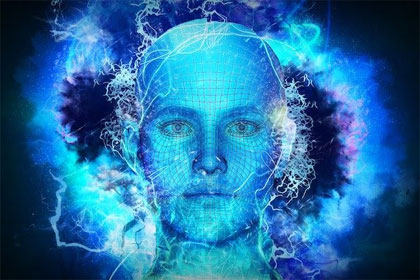 You can see a selection of some of her many, many works of art here. Peavy also wrote many manuscripts on spiritualism, the occult, and alien life forms, and made films along these lines as well. Her most well-known book is perhaps The Story of My Life with a UFO, and in the case of her writings she often would claim that Lacamo had helped her compose and write those as well. Her artwork was front and center, though, and Peavy held many exhibitions throughout the 1940s and beyond, but her claims of having an alien being channeling these works through her brought her a lot of negative publicity and criticism at times, and helped to alienate her from the mainstream art scene. Laura Whitcomb, curator at Beyond Baroque Literary Arts Center in Venice, California, has said of this:
You can see a selection of some of her many, many works of art here. Peavy also wrote many manuscripts on spiritualism, the occult, and alien life forms, and made films along these lines as well. Her most well-known book is perhaps The Story of My Life with a UFO, and in the case of her writings she often would claim that Lacamo had helped her compose and write those as well. Her artwork was front and center, though, and Peavy held many exhibitions throughout the 1940s and beyond, but her claims of having an alien being channeling these works through her brought her a lot of negative publicity and criticism at times, and helped to alienate her from the mainstream art scene. Laura Whitcomb, curator at Beyond Baroque Literary Arts Center in Venice, California, has said of this:
Peavy was articulate, intelligent, very well educated in the arts, but when she identified her discarnate entity Lacamo, in the aftermath of the war, when there was this fear and anxiety over the UFO phenomenon and the Roswell incident, everyone dropped her and thought she was absolutely crazy. These were dangerous ideas to be affiliated with and could get you in a lot of trouble, even on an FBI list. She became something of an astroculture celebrity. She realized the art world was very fearful.
Her appearances in the media did little to dispel her inherit strangeness. For instance, in an appearance on the live broadcast the Long John Nebel talk show, on which various paranormal topics were discussed, Peavy wore one of her masks and was in a trance throughout the interview. During this interview, Lacamo would even speak through her, saying, “We are using her exactly as you use your microphone. We are beings existing.” Things like this made sure she stayed mostly out on the fringes of the art world, and Peavy gradually faded into obscurity from the 1950s onwards, although she continued to produce and exhibit her art all the way up to her death in 1999. Right up into the present her artwork is occasionally put on exhibit, notably a successful 2018 exhibit at the Andrew Edlin Gallery in New York, as well as a 2021 Los Angeles exhibition entitled “Paulina Peavy: An Etherian Channeler,” but although her work has been mostly well-received and has seen a sort of reevaluation, she remains a mostly obscure figure in the art world as a whole, her work largely seen as a curiosity more than anything else. We are left to ask just where her inspiration truly came from. Was she really channeling these forces from beyond our understanding and was she really guided by UFOs and this alien entity? Was this just her own perception and a figment of her mind? It is all a curious glimpse into the mind and work of one of the more eccentric artists of her time, and a peek through the hazy, little understood world of the human creative process, the phenomenon of mysterious inspiration, and how we produce ideas.
MU*


